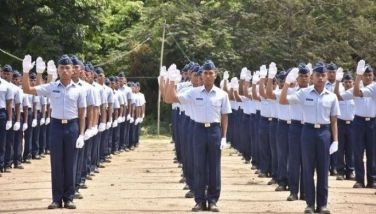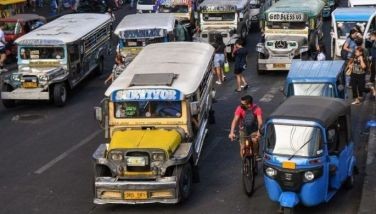Taliptip: A long goodbye where the sea will soon meet the sky
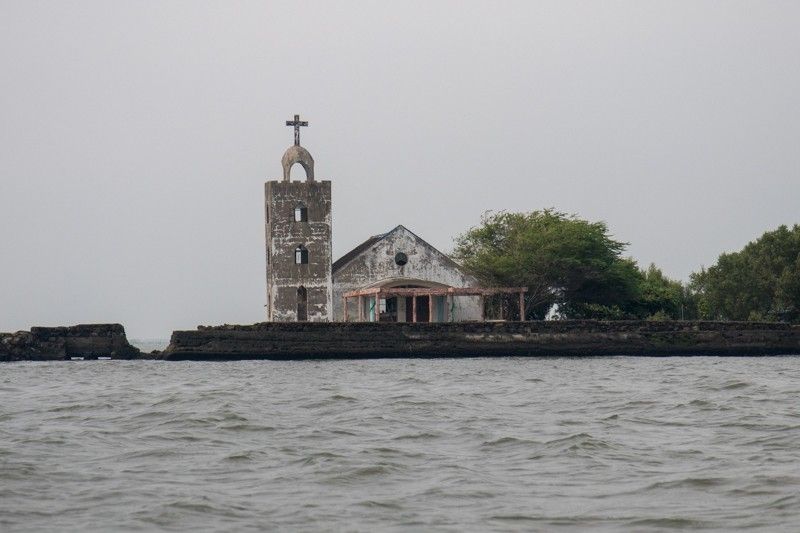
Photos and multimedia by Efigenio Toledo IV
BULACAN, Philippines — Documented in dozens of photographs, the abandoned chapel on a sandbar off the coast of Obando, Bulacan is easily the most recognizable symbol of the community in Barangay Taliptip in Bulakan town and of their struggle to hold on to their homes.
"We have had weddings there, and baptisms," Thelma Bantigue, 38, says in Filipino from a stone bench in front of the chapel, now just shelter for images of saints and angels and to two dogs.
Bantigue, whose family is one of the last seven with houses still standing in what will soon be the site of the P734-billion New Manila Airport, says she hopes she can still attend Simbang Gabi at the chapel come the holidays in December.
The seven families will move out soon from their decades-old homes to a housing compound in Barangay Bambang in Bulakan town, an area found for them by San Miguel Corp., which targets to start building the airport this year. The rest who agreed to leave – they dismantled their homes while Luzon was on lockdown – got their compensation in cash, which rumors say were around P250,000 each.
Once a residential area, Sitio Kinse – the sandbar where the Bantigues live and called that because of the 15 hectares of fishponds that used to be there before the waters rose – is now private property.
An Army lieutenant was assigned to monitor visitors to Kinse, and just about any person without authorization from local government is told to go back or is directed to the chapel, which is still a public area.
It is there that we meet with the people of Kinse, who paddled over in their boats after we were told we could not visit them. It is also there where municipal police later check on us to "provide security" as we interviewed residents.
Uncertain futures amid promised progress
Under government guidelines on building infrastructure projects, relocation for affected residents is considered last resort and done only after consultations had been conducted. As it is, regulations stipulate that in rolling out outlays, displacement should be minimized as much as possible.
If and when relocation proceeds however, affected parties must get necessary assistance, which in this case, the government and San Miguel have offered. Apart from monetary compensation, the people of Kinse were offered vocational scholarships through the Technical Skills Development Authority and some have had their children sign up for training in welding and in massage therapy.
But transition for displaced families will never be easy. According to a 2016 paper by Reazul Ahsan of the Malaysia Sustainable Cities Program, "displacement due to physical development encompasses more than the loss of land: displaced communities also lose their social structure, control over their lives, traditional living patterns and economic activities, and control over natural resources."
As expected, this is a common concern among residents interviewed, that they will be transplanted to a community that they know little about and will have less freedom than what they are used to.
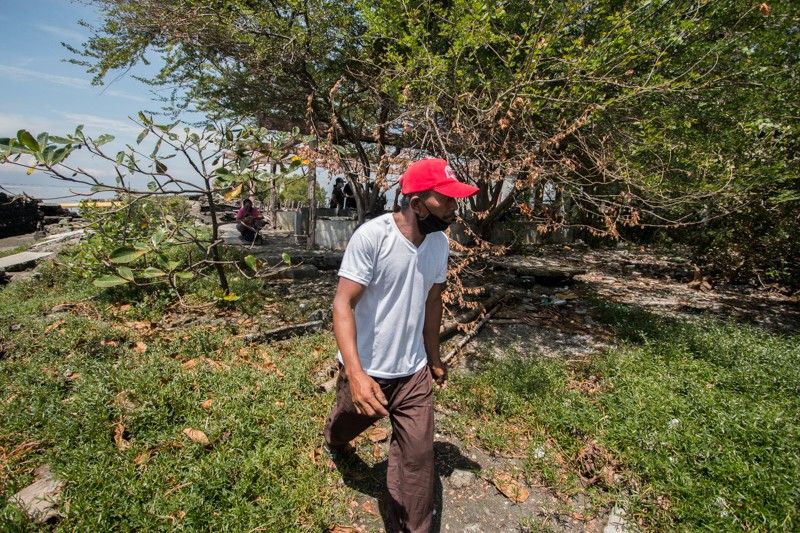
"Of course, we are worried," Teody Bacon, 45, says, explaining that it will be far different from life on Kinse, where the families can catch crabs and shrimps in the shallows just a short walk from their doorsteps.
The people of Kinse, like many fisherfolk in the Philippines, rely on the sea for their livelihood as well as for food. Anita Anastacio, 39, shares children as young as seven already know how to catch crabs and gather shellfish for food or to be marketed to raise cash.
She says the children learn it from their parents, the same way that the adults learned from theirs. "When I was young, my father and I fished here," Rodel Alvarez, 40, and who now mainly traps crabs, says. "Sometimes my father and I would also fish for tilapia, for food."
When they move to Bambang, Anita says, she will have to seek work as househelp because living in the barrio will mean they will need more money for their daily needs. Apart from worrying about leaving her family to work, Anita worries about how she will be treated by future employers.
According to a Social Weather Stations survey released this month, adult joblessness was at 34% in September, slightly below the national rate of 39.5%. Worse, two of every five Filipinos who had lost their jobs were only left unemployed recently by the pandemic.
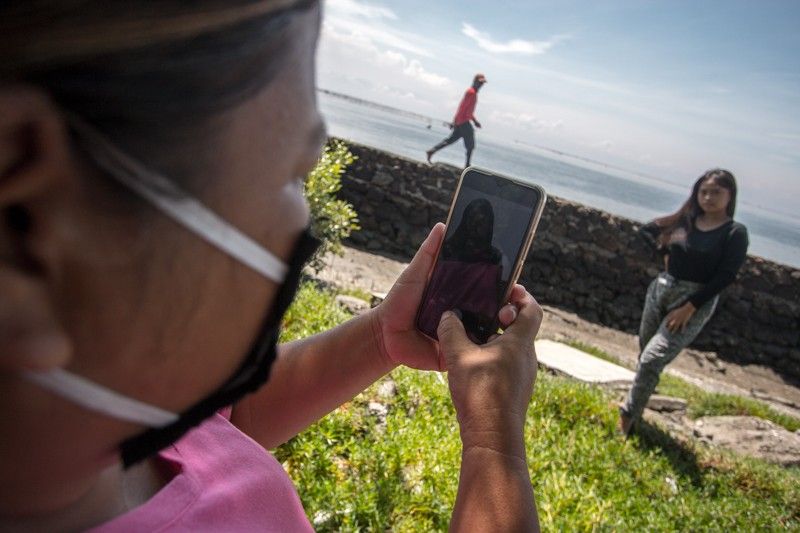
But Anita says she would prefer to be able to watch over her family, adding she has rarely worried about food before, because the sea always provides. "It's different if you work for someone. They'll shout at you if you make a mistake," she says several times during the interview. "All my husband and I know are the sea."
Thelma says she is not yet sure how her family will manage away from Kinse.
"It's easy to make plans but we don't have the money to start a business. I could open a small store or I could sell cooked food but I need at least a little money to do that," she says.
A future other than fishing for Taliptip youth
Teody is unsure of whether he will avail of livelihood scholarships. "I'm a little too old for some of the jobs, like those in heavy equipment," he says. He knows he will have to find a new way to earn a living, though, and plans to open a small store with his wife.
"Like we tell each other: Nobody is born great at basketball, you have to learn and you have to adjust."
He says the generation after them, who have had more access to education would have an easier time with the move. They are also younger and will be better able to find work when the construction on the airport begins.
"The project will provide 450,000 jobs during the construction phase alone. And then after that, upwards of a million people will be able to benefit from the undertaking; not to mention the hundreds of thousands of passengers who will fly in and out of the country everyday," Sen. Grace Poe said in sponsoring San Miguel's airport franchise, which also grants the company tax perks.
The Senate ultimately passed the measure, following the House of Representatives, bringing the bill closer to enactment.
"We don't have to live off the sea forever," Teody says.
Old men of the sea
Teody's brother, Teodoro, 42, plans to do that for as long as he can. The Army lieutenant in charge of the area has allowed them to fish in the waters around Kinse until construction on the airport begins.
"Of course, when the project starts, we can't do that anymore because the sea will no longer be here," he says. "The fish will no longer be here."
Fisherfolk will have to move farther out to sea and, once the Kinse families move to Bambang, this will mean spending double for gasoline for their boats. Fishing from Kinse and bringing the catch to nearby Obando, Teody says he can make from P500 to P1,000 a day. Once they move away, he says, he will have to spend more – on fuel and food – to make less.
"Our livelihood is in the sea, why put us on land?"
Rodel gathers crabs for a living and says he can earn up to P3,000 for a day's worth of setting and harvesting traps. The biggest adjustment for him would be having to stay at sea while waiting for hours for the traps to fill instead of waiting inside his house in Kinse.
NEWSX COVER STORY: Fed by the waters: Coastal waters in Bulacan that have provided food and livelihood for decades may soon be paved over for an airport project
Environmentalists have warned the Bulacan airport project, similar to reclamation projects along Manila Bay, will affect food security in the region. Fisherfolk like the people on Kinse will be most affected.
Apart from the planned construction of the Bulacan airport, the 418-hectare Manila Reclamation Project in the city of Manila is seen to start soon after securing permits and an environmental compliance certificate.
Twin reclamation projects covering 420 hectares in Bacoor, Cavite have also been given ECCs by government despite opposition from environmentalists, fishing communities, and a senator. Aside from altering the marine environment by land-filling, the projects also threaten mangroves, where marine life live, feed and spawn.
RELATED: Coast Guard 'concerned' with Manila Bay reclamation projects
"When you reclaim, you bury, you wipe out, you have to destroy, you have to take out the environment. The environment is crucial because that's where the fish live, that's where the fish breed,” Vito Hernandez, an environmental archeologist and the public information officer of AGHAM, told Philstar.com in an interview in 2019.
"More than that, let’s not forget about the communities they support. That is what is most important," he also said. While commercial fishers can go out to deeper water, it will not be easy for people like Teodoro and Rodel to do so.
"The waves there are big. That's already far for us," Rodel says, pointing at a ship in the distance. He says he will take his chances by tying up beside a mangrove and catching crabs nearby, although he is not sure how much longer he will be allowed to do that.
When concrete covers the mud where the crabs live, he says he will try his luck buying items from Infanta, Quezon, where he says the prices of goods are lower, and bringing them to Bambang to sell.
"At my age, can I still look for a new job? Can I still learn a new trade?"
A planned mangrove plantation in Hagonoy town may offer livelihood for crabbers like Rodel. San Miguel, according to reports, plans to grow mud crabs at the 10-hectare mangrove plantation that the company said is meant to be a flood mitigation measure but will also help provide food.
"We are seeding 100,000 mud crabs monthly at Hagonoy's mangrove plantation area to help boost the country's mud crab production," SMC president and COO Ramon Ang is quoted as saying in reports on the plantation.
No regrets for resistance
Despite looming displacement, Teodoro is hopeful that the new airport, once built, will mean better life for their community, or at least for the community they will leave behind. "We lost so much to this project. Not just us, the environment, too. So many lost their livelihoods to this project for them to just say that there are no people here."
Although the long struggle for the people of Taliptip to hold on to their livelihoods and their way of life is coming to a close, Teodoro says he does not regret the fight.
"Maybe this is as far as we can go and we just have to accept it. We fought it but we lost. We can meet them with our heads held high. We can look them in the eye [because] we stood up for our rights."
- Latest
- Trending




























